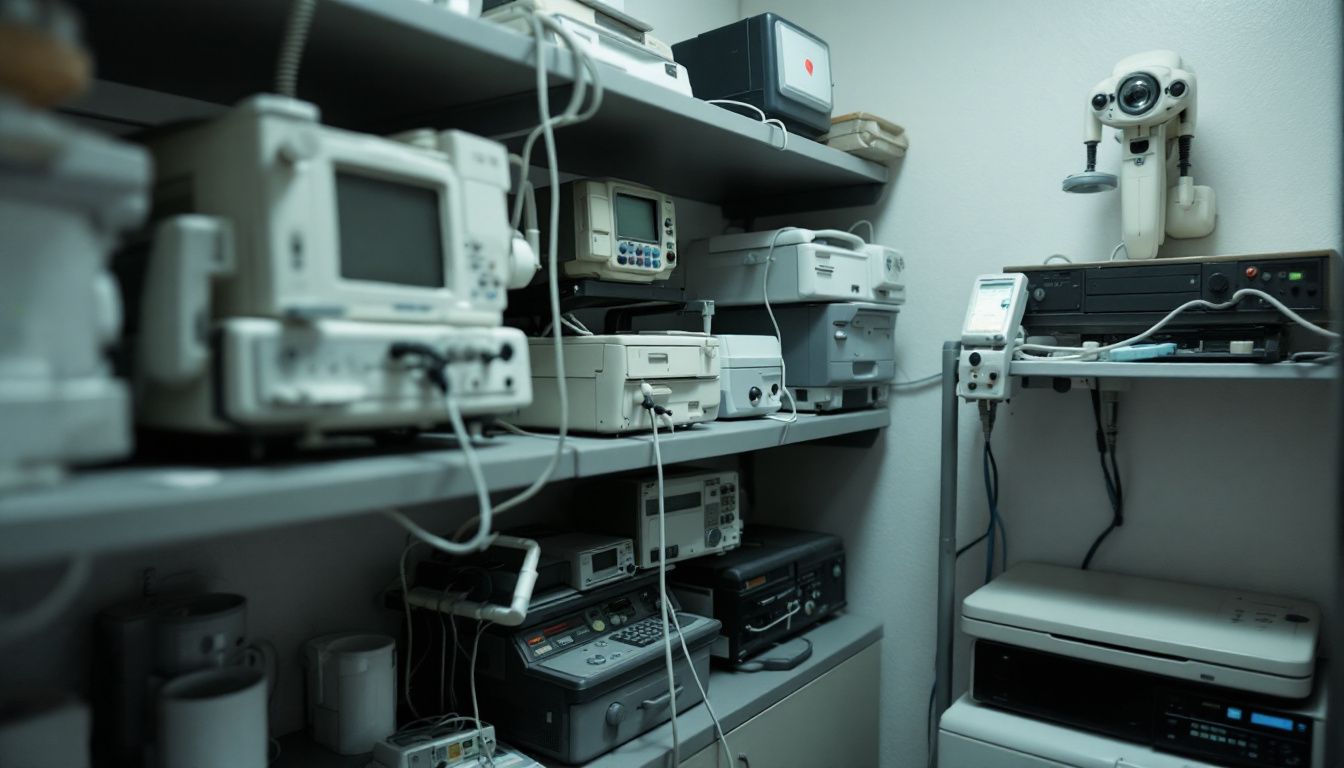Many elderly patients get cancer screenings they don’t need. These tests can bring risks like false alarms, stress, and unneeded treatments. This blog will explain why over-screening happens and how it affects older adults.
Thank you for reading this post, don't forget to subscribe!Keep reading to learn what you or your loved ones should know about these tests.
Key Takeaways
- Many older adults get cancer tests they don’t need, causing stress, false positives, and risks like bleeding or infections.
- Tests like PSA screenings for prostate cancer are often ineffective in adults over 75 with limited life expectancy or severe health issues.
- False-positive results lead to extra tests and financial burdens without real benefits for patients near end-of-life stages.
- The U.S. Preventive Services Task Force (USPSTF) advises stopping routine screenings when patients have severe illnesses or short life expectancy.
- Doctors should talk openly with older patients about the risks and benefits of testing to make better health decisions together.
Unnecessary Cancer Screenings for Elderly Individuals
Many older adults undergo cancer tests that may not benefit them. These screenings carry risks, especially for those with other health problems or shorter life expectancy.
Risks and Concerns
Over-screening can expose older adults to unnecessary risks. Screening tests, like colonoscopies and mammography screenings, may lead to complications such as bleeding or infections.
For those with limited life expectancy or severe comorbidities, these procedures often provide little benefit but increase harm. A study found that patients over 75 were still undergoing prostate-specific antigen (PSA) testing despite its minimal efficiency in this age group.
False positives from cancer screenings can cause undue stress. Patients may go through invasive follow-up tests for conditions they do not have. This adds financial burdens and worsens their quality of life.
Health experts argue that individualized screening based on a person’s health status is safer than blanket guidelines for all older individuals….
Disconnect between Benefits and Effectiveness
Cancer screenings often fail to match their intended purpose for older adults. Many screenings, like prostate cancer screening or cervical cancer screening, offer limited value when life expectancy is short.
According to research by the U.S. Preventive Services Task Force (USPSTF), the benefits decrease as age and comorbid conditions increase.
For example, breast cancer screenings may detect slow-growing cancers that won’t impact quality of life or survival in someone with significant health issues. Screening mammography might seem helpful but can lead to overdiagnosis without improving outcomes.
Studies show this mismatch creates unnecessary risks while offering little benefit for individuals near end-of-life stages.

Potential Harms of Over-Screening
Unnecessary cancer screenings can lead to stress and health risks. Older adults with other medical issues may face serious problems from these tests.
False Positives and Anxiety
False positives in cancer screenings can cause panic. A test may show cancer when there isn’t any, leading to stress and fear for older patients. This is especially common in prostate-specific antigen (PSA) testing and mammograms.
Patients often face sleepless nights while waiting for more tests or results. Anxiety grows as they worry about their health and future.
These false alarms don’t stop at mental strain—they lead to unnecessary procedures like biopsies or colonoscopies, which have risks themselves. Older adults with comorbid conditions are particularly vulnerable during these follow-ups.
Even caregivers feel the pressure of supporting loved ones through this uncertainty.
Health care decisions should reduce—not create—anxiety.
Complications and Financial Burden
Over-screening leads to serious problems for older adults. Procedures like colon cancer screening or prostate-specific antigen (PSA) testing can cause physical harm. Some may experience bleeding, infections, or severe pain after unnecessary tests like colonoscopies.
For those with comorbid conditions or mild cognitive impairment, recovery from such complications becomes even harder. These harms affect their quality of life and increase hospital visits.
Unneeded screenings also create a heavy financial burden. Cancer detection methods, such as lung cancer screening or pap tests, cost healthcare systems millions each year. Patients face high out-of-pocket expenses too—for example, fees for follow-ups from false positives in breast cancer screening.
This overuse strains public health budgets and wastes resources better used on evidence-based treatments for patients with actual risks or family history of cancer.
Recommendations and Call for Better Communication
Doctors should discuss the risks and benefits of cancer screenings with older patients. Clear conversations can help decide if tests fit a person’s health and goals.
Health Organization Guidelines
Health organizations offer clear advice on cancer screenings for older adults. They stress balancing risks and benefits, especially for those with limited life expectancy.
- The U.S. Preventive Services Task Force (USPSTF) advises stopping routine screenings for patients with severe illnesses or short life expectancy. This includes breast, prostate, and cervical cancer screenings.
- Colorectal cancer screening is usually unnecessary after age 75 if past tests were normal. Functional status and comorbid conditions play a role in this decision.
- PSA testing for prostate cancer has specific guidelines to reduce overdiagnosis. It’s often discouraged in older men due to risks of overtreatment.
- Breast cancer screening may not benefit elderly women with severe dementia or major health issues. Individualized care is key here.
- Lung cancer screening using low-dose CT scans should be limited to those who meet strict criteria like smoking history and overall health.
- Cervical cancer screening, such as Pap smears, is not needed after age 65 if there’s no history of cervical intraepithelial neoplasia.
- Organizations like the American Geriatrics Society encourage doctors to discuss screening cessation when quality of life declines sharply. These talks help patients make informed choices.
- Cohort studies show that aggressive screening in unhealthy older patients often leads to false positives and anxiety without improving outcomes.
- General internal medicine experts suggest regular evaluations of family caregivers’ concerns about ongoing invasive tests or treatments for their loved ones nearing end-of-life stages.
- Controlled trials emphasize that over-screening drains healthcare resources while offering little value in disease control among older groups facing declining health conditions.
Importance of Doctor-Patient Discussions
Doctors and patients need open talks about cancer screenings. These talks help older adults understand risks, benefits, and their limited life expectancy. Many screenings like prostate cancer screening or breast cancer screening might be unnecessary for those with serious comorbid conditions.
Primary care physicians play a big role in these discussions. They guide decisions based on medical records, family history of cancer, and functional status. Clear communication can prevent false positives and overdiagnosed cases while improving the patient’s quality of life.
Conclusion
Cancer screenings can save lives, but they aren’t always right for older adults. Unnecessary tests can lead to stress, harm, and extra costs. Clear talks between patients and doctors about risks and benefits are key.
Every individual deserves care that fits their health needs and life stage best. Smart decisions improve quality of life in the later years.
